As Poison Put to Sound remains on holiday break, I re-share this post, which garnered a lot of attention and speculation when I wrote it four years ago
On my recent visit to Amsterdam, I visited the Rijksmuseum to investigate a curious instrument in their collection. It had come to my attention because of my research on cello endpins.
The instrument, by a maker named Van Aernick and dated 1677, is about the size of a viola, but has a short endpin. The Rijksmuseum has called the instrument a tenor viola or violoncello piccolo, but they are, frankly, not sure what it is.
I, too, remain baffled by this “tiny cello.” What is it, and how was it played?
Here are the facts: The body of the instrument is 395 millimeters long, and the endpin is 90 millimeters. It has the carved head of a boy or girl in a ruff, or perhaps a cherub with a halo. The label says it was made in Leiden.
My first thought, upon seeing photos of the instrument, was that it might have been used by a child. However, these measurements refute that proposition. The instrument and endpin are much too small. If used by a child, that child would have to be tiny — a two years old or younger!
Another reason why it is improbable that a child used the instrument is that the tip of the endpin is smooth and shiny, without any scuff marks. The only mark on the endpin is a tiny indentation at the tip, suggesting it was carved on a lathe. If used on the floor, an endpin like this would surely slip (most early endpins have a metal tip to combat this) and would have more signs of wear.
So the the endpin probably didn’t touch the ground. However, the instrument was probably not played da braccio, or on the arm (think viola) either.
Aside from the fact that the endpin would poke the player’s neck (ow!), the instrument also has very high back arching that is more typical of instruments played da gamba, or between the legs (think cello). The instrument also doesn’t have any signs of wear typical of da braccio instruments.
This all suggests that the instrument might have been played between the legs, or at least vertically. However, if not played on the floor, how on earth was it played?
The most interesting observation that I made during my trip to the Rijksmuseum regards the mechanism by which the endpin attaches to the instrument. It twists into a hollow end button, much like a screw and nut. This method of attaching the endpin is unusual, but ingenious. The mechanism keeps the endpin firmly in place, yet allows it to be easily detached without removing the tailpiece.
This design, indicative of a great attention to detail, suggests that the instrument might have been used both with and without the endpin.
In fact, the endpin looks quite different from the rest of the instrument. It is shiny and lighter in color than the body. Not to mention visually distinctive, with gentle undulations. While lathe-carved endpins are not uncommon, I have never seen this particular shape. Curator Giovanni Paolo di Stefano raised the possibility that the endpin might not be original.
So, what conclusions can we make about this instrument? It was probably played by an adult, not a child, and probably not da braccio or on the floor. Where does that leave us?
Dr. di Stefano suggested that the instrument might have been played on a table or stool, like this painting by De Hooch. However, it seems to me puzzling that an endpin would be necessary if it were already raised by a piece of furniture.
Other options are that the instrument was balanced on the player’s knee, like a kamancheh, or played da spalla (on the shoulder). It is also possible that the endpin was added later, serving a decorative or display purpose.
This “tiny cello” remains a mystery to me. However, its mere existence shows the degree of variation among stringed instruments in the 17th century, and how not everything fits into neat categories.

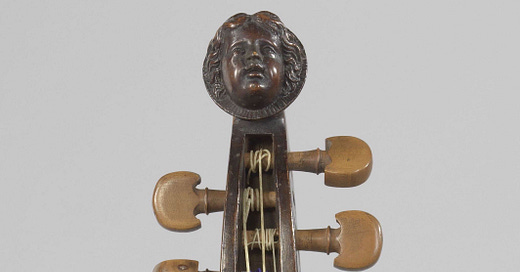

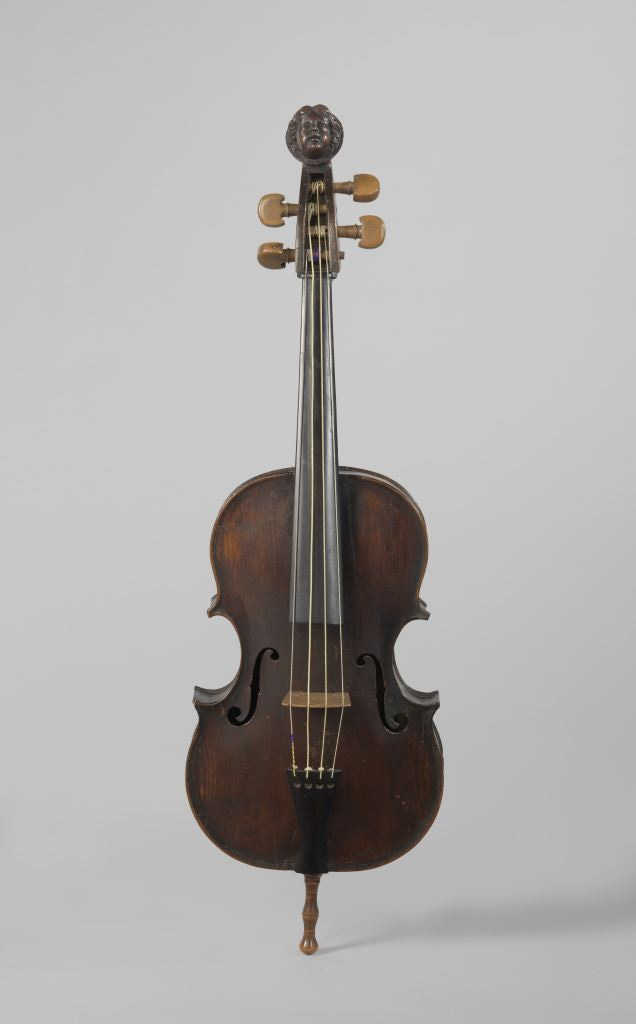
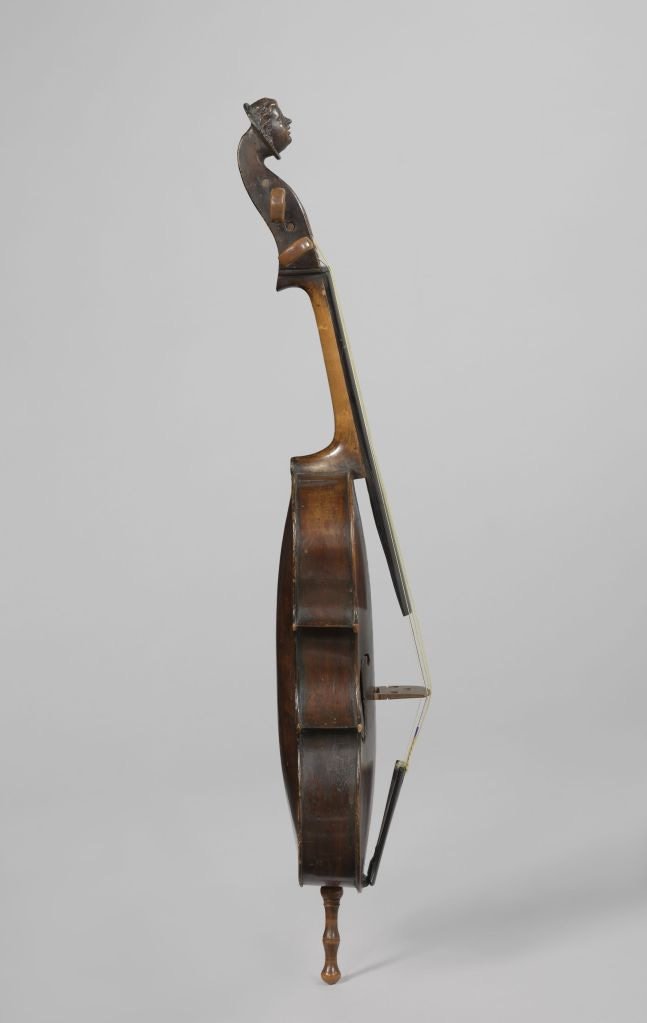

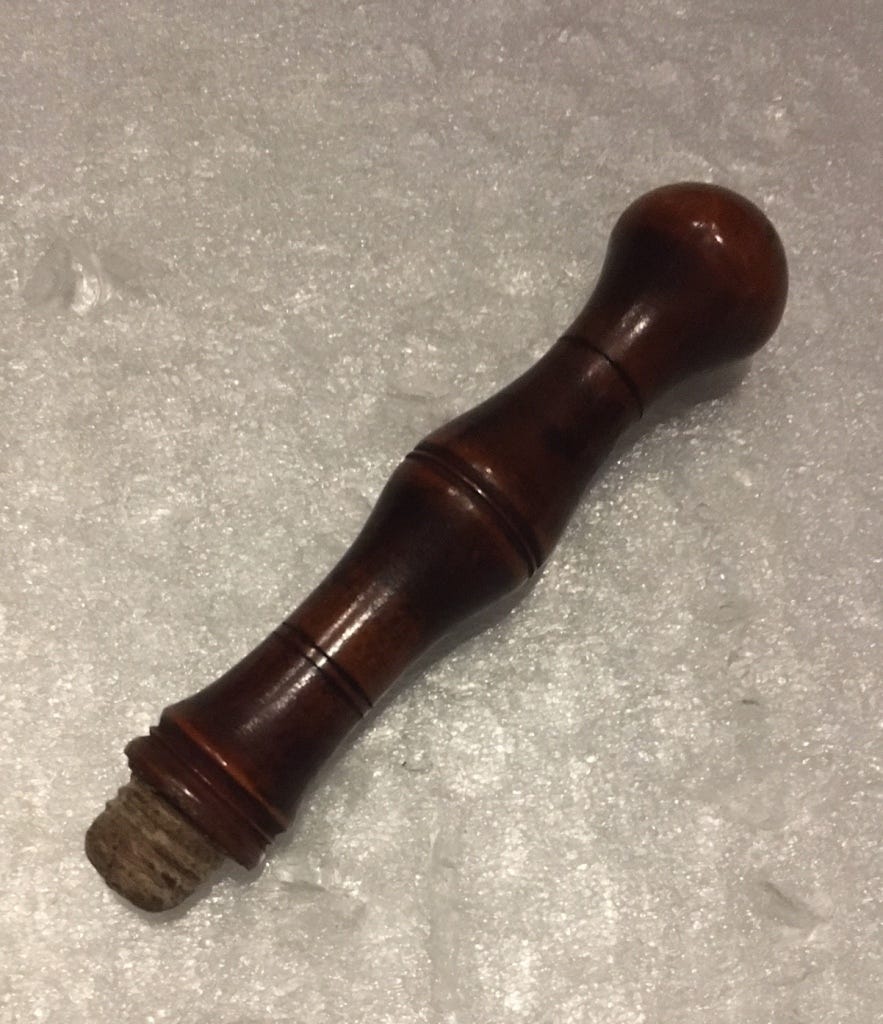
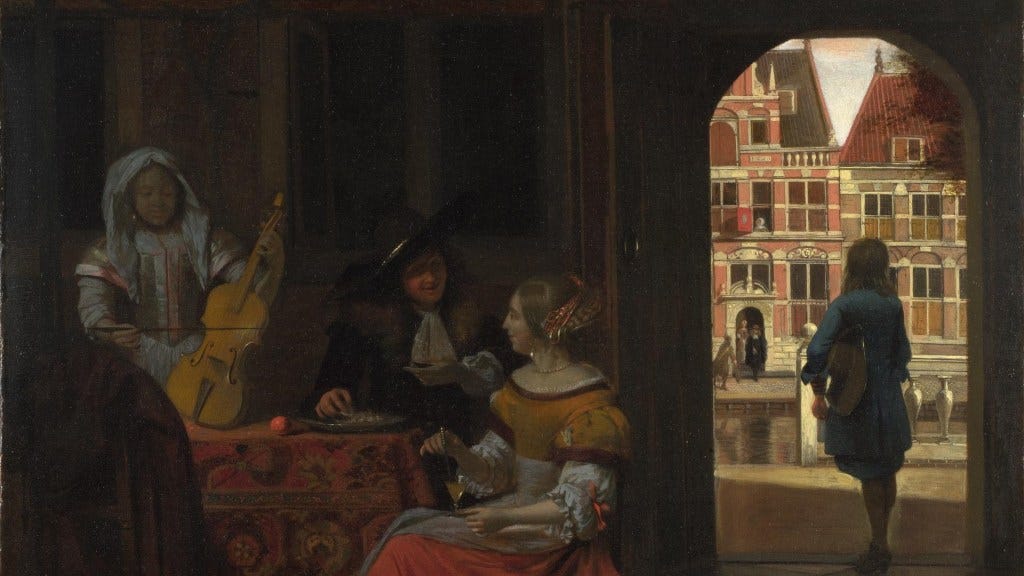
I'd love to see some of the speculative responses you got. This made me think of the Bulgarian gedulka which is played upright supported by a belt draped diagonally, in which the point of the instrument is cradled (see https://www.alamy.com/stock-photo-brooklyn-us-19-april-2013-nicolay-kolev-of-the-band-cherven-traktor-55776262.html?imageid=127724A5-7AFE-4916-A507-E1624C4BF8EC&p=81747&pn=1&searchId=0e56c11e829bc11a6b32f3393fecb988&searchtype=0). Its a very different looking instrument but it is held in a manner that might have applied to this instrument so that it could be played standing up or even walking. Just another wild speculation. Happy New Year.